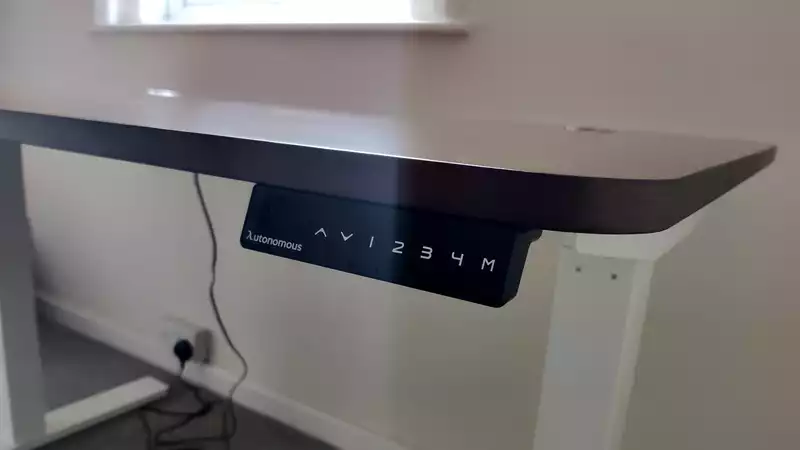According to the Autonomous website, SmartDesk Core (opens in new tab) has been "bought by over 2,100 Microsoft employees. If my math is correct, that is almost 10% of Microsoft's workforce. Regardless of whether the entire floor of Microsoft's headquarters patronizes this desk or whether the majority of employees purchased the same desk for their home offices, I figured there must be something to this desk. So what can this desk offer that other standing desks do not?
I was sent the medium model, which at 53 x 29 inches is somewhere between the diy 52 x 24 inch version and the ridiculous 70.5 x 30 inch XL version. It's a medium form factor, so it doesn't do justice to the images on the site. It's more than enough for two gaming monitors and my mid-tower PC.
There are several frame color options for the same price so you can pair it with a variety of worktop styles. The standard size desk and black or white worktop are $499 for medium, $399 for small, and $849 for large. White oak and walnut are $549 for the medium model, and bamboo and dark bamboo add $150 to the base color.
Because bamboo is all the rage right now.
As for the UK, the choices are a bit more limited. Medium desks only, black and white for £450 and wood-look for £498. There are no bamboo ones.
According to Autonomous, "even a complete beginner can assemble it in about 30 minutes." The instructions caution that the work should be done by two people, but my delay was due in part to getting tripped up on the first step. The wording in the instructions was not that well written; it simply asked that it be placed in the "proper position." The diagrams were not helpful at all, and I had to really stop and think about which holes were where.
Furthermore, getting everything aligned was more difficult than it needed to be. Once I deciphered the instructions, some of the holes were still a little off.
Despite a few screws being slightly skewed, it was finally finished and standing strong in my spare room. As I struggled with the screws, not a single screw came off, and the thick vinyl covering the warp-proof MDF did not come off easily. The frame is sturdy, even on thick carpet; it doesn't shake when bumped with a chair, and coffee doesn't spill.
Wrapping the cables underneath allowed them to fit neatly between the frame and the motor unit. The included cable ties also make it easy to keep everything tidy. This and the two chrome-plated routing holes on either side of the desk give it a slight edge in terms of cable management, but not as much as something like the magnetic cable management solution in the Secretlab Magnus Pro XL (opens in new tab). In short, cable management on standing desks can cause problems when shifting positions.
In any case, the underside is relatively clean from the start, with a walnut top polished to perfection and gorgeous curves at the corners. The edges of the top are not sharp either, a point where my current mousepad-less Arozzi Arena desk suffers.
Overall, the SmartDesk Core is a very sleek and stylish desk. It is as beautiful as the $1,450 BDI Stance listed in our Best Gaming Desks (open in new tab) guide. And while it's not pre-assembled, the SmartDesk Core comes in at less than half the price of the larger model, even with the walnut wood top. If it looks this good and saves this much, we're willing to overlook any functional holes.
However, SmartDesk Core is comparable to Stance in every way.
The main thing that stumped me was its name: the SmartDesk Core is a "smart" desk. I've spent the past week trying to understand what is smart about this desk, other than the fact that it memorizes four different heights, which doesn't fit my modern understanding of the word. The medium-sized model has neither AI nor automatic collision detection. The company's other model, the Connect, has Bluetooth capability, which seems to justify the moniker a bit more, but otherwise, don't get too caught up in the name. [The SmartDesk core is a wonderfully stylish desk for the price, and while it is a bit of a pain to assemble and not as good a value as something like the Flexispot EN1B (with smart crash protection), it is a cheaper alternative to the BDI Stance in the high-end standing desk market as a stand-alone desk, it is worth a look. I'd be willing to pay $499 for the standard model in a basic color, although it may not be a good choice for those who like bamboo or want the huge XL model.
I'd even be willing to pay a little extra for the walnut wood look that Autonomous demands.
.

Comments